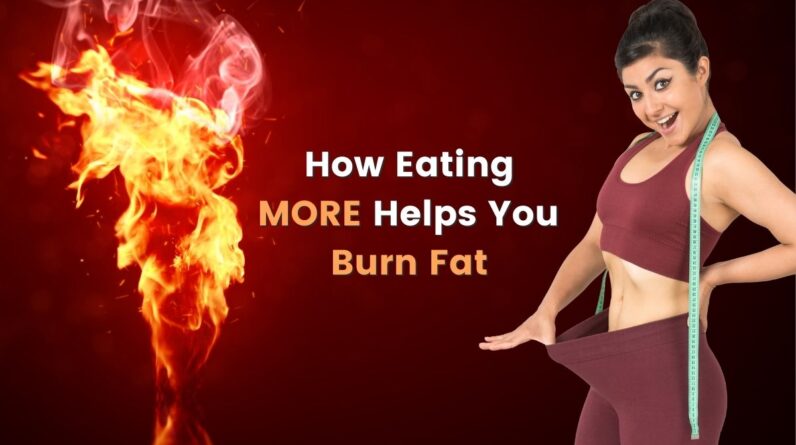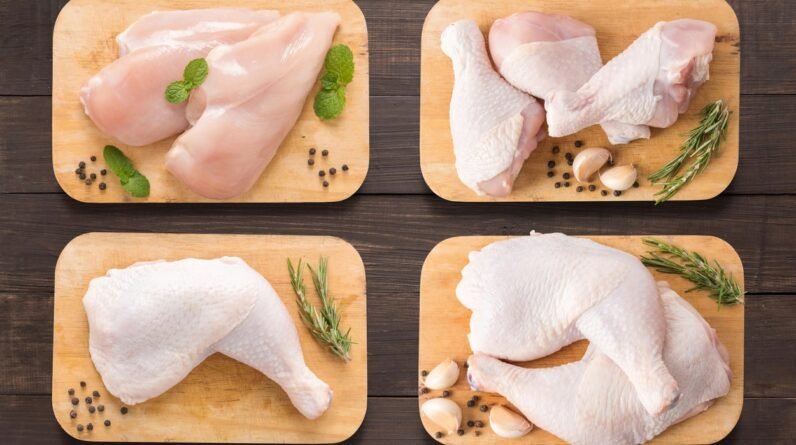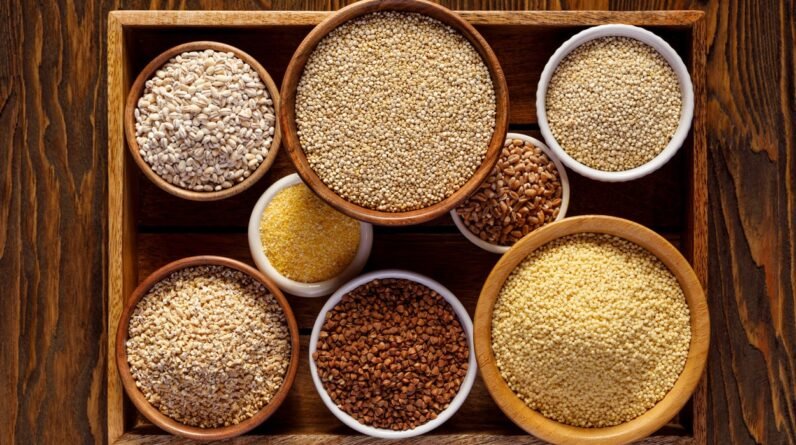
If you have been dieting forever and still cannot lose weight, you are not alone. Cutting calories seems like the obvious answer, but at some point, it stops working.
You eat less, work out more, and somehow your body refuses to budge. The problem is not your willpower. It is your metabolism.
This is where reverse dieting comes in. Instead of slashing calories even further, you actually start eating more.
The key is increasing nutrient-dense foods and prioritizing protein to rebuild your metabolism. Done correctly, this approach makes fat loss easier while helping you feel stronger and more energized.
This post may contain affiliate links, which helps keep this content free. Please read our disclosure for more info.
What Is Reverse Dieting
Reverse dieting is a strategic way to increase calories after a long period of eating too little. Instead of jumping straight back into a higher intake, you gradually add more food over time.
This slow and controlled approach allows your metabolism to adjust without sudden weight gain while helping your body function properly again.
Many women spend years in a constant state of dieting, often eating too few calories and avoiding certain foods out of fear of gaining weight.
Over time, this restrictive approach backfires. The body adapts to the lower intake by slowing metabolism, reducing energy levels, and making it harder to lose fat. This is why so many women hit frustrating plateaus despite eating very little.
Reverse dieting works by repairing the damage caused by chronic dieting. The key is not just eating more calories but focusing on the right kinds of foods.
High-quality proteins, healthy fats, and fiber-rich carbohydrates give your body the nutrients it needs to function properly.
Protein is especially important because it helps maintain and build lean muscle, which keeps your metabolism active and supports long-term fat loss.
Why Long-Term Dieting Can Backfire
Eating in a calorie deficit can help with weight loss initially, but if you stay in that deficit for too long, your body fights back.
The human body is designed for survival. When it senses that food intake is consistently low, it slows down metabolism to conserve energy. This is your body’s way of protecting itself, but it makes fat loss much harder over time.
Instead of burning fat efficiently, your body becomes more resistant to weight loss. You may notice:
- Stalled weight loss despite eating less
- Low energy levels and constant fatigue
- Increased hunger and cravings, especially for carbs and sugar
- Trouble sleeping or waking up feeling unrested
- Feeling cold all the time, even in warm temperatures
- Hair thinning or shedding due to lack of essential nutrients
Chronic dieting can also have a major impact on your hormones, muscle retention, and thyroid function. The thyroid is responsible for regulating metabolism, and it requires enough calories and nutrients to work properly.
When calorie intake is too low for too long, thyroid hormones decrease, making it even harder to burn fat and maintain energy levels.
Another major issue with long-term dieting is muscle loss. If your body does not get enough fuel from food, it starts breaking down muscle for energy.
This is a big problem because muscle is what keeps your metabolism running efficiently. Less muscle means fewer calories burned throughout the day, which only makes weight loss more difficult.
This is why prioritizing protein and nutrient-dense foods is so important. Protein is essential for preserving lean muscle mass, which directly impacts metabolism and fat loss.
Without enough protein, your body will turn to muscle tissue for fuel, slowing your metabolism even further.
Women who diet for extended periods often find themselves trapped in a cycle of eating less and getting nowhere. They are tired, frustrated, and struggling to see results.
The solution is not to cut even more calories but to fuel the body properly with high-quality proteins, healthy fats, and fiber-rich carbs.
A well-nourished body functions better, burns fat more efficiently, and has more energy for workouts and daily life.
How Reverse Dieting Helps With Fat Loss
Reverse dieting helps by giving your body the fuel it needs to function properly. When you slowly increase calories with whole, nutrient-dense foods, your metabolism starts working again.
Instead of staying stuck in survival mode, your body recognizes that it is no longer under threat. This shift allows it to burn fat more efficiently rather than storing it as a protective mechanism.
For many women, eating more sounds counterproductive when trying to lose weight, but the key is in the quality of food and the gradual increase in calories. When your body is properly fueled, it stops fighting against you and starts working with you.
Eating more also means:
- Better energy for workouts and daily activities – When calories are too low, workouts feel exhausting, recovery takes longer, and everyday tasks leave you feeling drained. Increasing calories, especially from protein and complex carbohydrates, provides the energy needed to build muscle and stay active without constant fatigue.
- Improved hormone balance – Long-term calorie restriction can throw off hormone levels, including those that regulate metabolism, hunger, and fat storage. Reverse dieting helps support thyroid function, stabilize cortisol levels, and restore a better balance of leptin and ghrelin, the hormones that control hunger and fullness.
- More muscle retention, which helps burn fat more efficiently – Muscle is metabolically active, meaning it burns more calories even at rest. If you are not eating enough protein or calories, your body breaks down muscle for energy, which slows metabolism. Reverse dieting allows you to build and maintain muscle, keeping metabolism strong.
- Fewer cravings and better appetite control – When your body gets enough high-quality food, it naturally reduces intense cravings for sugar and processed carbs. Protein and fiber-rich foods keep you fuller for longer, making it easier to eat in a way that supports fat loss without constantly feeling hungry.
The biggest mistake women make when increasing calories is adding too many processed or low-quality foods.
While it might be tempting to bring back high-calorie comfort foods, doing so can lead to fat gain rather than metabolic improvements.
The focus should be on protein, healthy fats, and fiber-rich carbohydrates to support metabolic function and muscle repair.
- Protein – The most important macronutrient for fat loss and muscle maintenance. Prioritize lean meats, eggs, fish, Greek yogurt, cottage cheese, and plant-based sources like tofu or lentils.
- Healthy fats – Essential for hormone production and brain function. Choose sources like avocados, nuts, seeds, olive oil, and fatty fish.
- Fiber-rich carbohydrates – Provide sustained energy and improve digestion. Focus on vegetables, fruits, quinoa, sweet potatoes, and whole grains instead of processed carbs.
By increasing calories with nutrient-dense foods and prioritizing protein, you allow your metabolism to function at its best, making fat loss easier and more sustainable in the long run.
How to Reverse Diet the Right Way
If you are ready to increase calories without worrying about weight gain, the key is to take a structured and strategic approach. Here is how to do it the right way.
1. Figure Out Your Current Intake
Before making any changes, track your current calorie intake for a few days. Many women are shocked to find they are eating far less than they thought, sometimes as little as 1,200 calories per day or even less.
This is not enough to support optimal metabolism, muscle maintenance, or overall health.
Use a food tracking app or simply write down what you eat to get an accurate picture of your current intake.
Make sure to track everything, including cooking oils, condiments, and snacks. Once you know your baseline, you can start making adjustments.
2. Increase Calories Slowly with Nutrient-Dense Foods
The biggest mistake people make when increasing calories is adding too much, too fast, or choosing processed foods that do not support metabolism.
The goal is to increase intake gradually while prioritizing high-quality, whole foods.
- Start by adding 50 to 150 extra calories per week based on your body size, activity level, and current intake.
- Increase primarily through protein, healthy fats, and fiber-rich carbohydrates rather than processed or high-sugar foods.
- Focus on whole foods such as lean meats, eggs, fish, nuts, seeds, avocados, and high-fiber vegetables to support digestion and satiety.
This slow approach helps your metabolism adjust and prevents unnecessary fat gain.
3. Prioritize Protein at Every Meal
Protein is the most important macronutrient when reverse dieting. It supports muscle retention, fat loss, and metabolic health while keeping you full and satisfied. Without enough protein, your body may store more fat or break down muscle for energy.
Aim for at least 20 to 30 grams of protein per meal and include protein-rich snacks if needed. The best sources include:
- Lean meats like chicken, turkey, and beef
- Fatty fish like salmon, tuna, and sardines for omega-3s
- Dairy options like Greek yogurt and cottage cheese
- Eggs and egg whites for high-quality protein
- Plant-based sources like tofu, tempeh, and lentils
By making protein the foundation of every meal, you help regulate hunger, build muscle, and support metabolism.
4. Strength Train to Support Muscle Growth
If you are increasing calories without resistance training, your body may store the extra food as fat instead of using it to build muscle.
Lifting weights signals your body to use the additional calories for muscle repair and growth, which keeps metabolism high.
- Focus on compound movements like squats, deadlifts, lunges, rows, and presses to engage multiple muscle groups.
- Train at least three to four times per week for the best results.
- Ensure you are progressively overloading by increasing weights or reps over time.
Building muscle means your body burns more calories at rest, making fat loss easier over time.
5. Monitor Changes and Adjust as Needed
Reverse dieting is not a one-size-fits-all process. Your body will respond differently depending on your metabolism, activity level, and how long you have been in a calorie deficit.
Keep track of:
- Weight and measurements – Some fluctuations are normal, but rapid fat gain could mean calorie increases are too aggressive.
- Energy levels – You should start feeling more energized and stronger in workouts.
- Hunger and cravings – If hunger disappears and cravings are under control, your metabolism is responding well.
If fat gain happens too quickly, double-check protein intake and slow down calorie increases. If energy levels remain low, you may need to increase calories slightly faster.
6. Stay Consistent and Patient
Reverse dieting takes time. If you have been in a calorie deficit for years, your body will not adjust overnight. It may take weeks or even months to restore your metabolism to a healthy level.
- Trust the process and stay committed to gradual calorie increases.
- Focus on how you feel rather than just the number on the scale.
- Remember that a properly fueled body burns fat more efficiently, has fewer cravings, and feels stronger overall.
But Will Eating More Make Me Gain Weight
This is the biggest fear when it comes to reverse dieting. Some weight fluctuation is normal at first, but that does not mean fat gain.
Much of it comes from increased glycogen storage and better hydration, not actual fat.
Eating the right foods makes all the difference. If you increase calories with processed foods and sugar, fat gain is more likely.
If you focus on lean protein, fiber, and healthy fats, your body will use the extra energy to fuel metabolism and build muscle instead of storing it as fat.
The Bottom Line
Reverse dieting is not about eating whatever you want. It is about eating strategically to rebuild your metabolism, feel better, and make fat loss easier.
If you have been stuck in a cycle of eating less and getting nowhere, shifting your focus to nutrient density and protein intake can make all the difference.
A well-fed body is a healthy body, and when your body is healthy, fat loss happens naturally.







